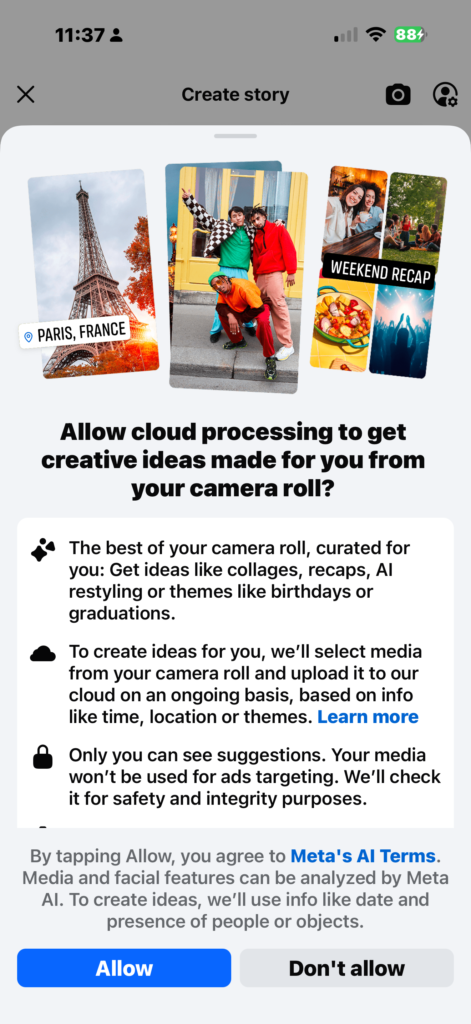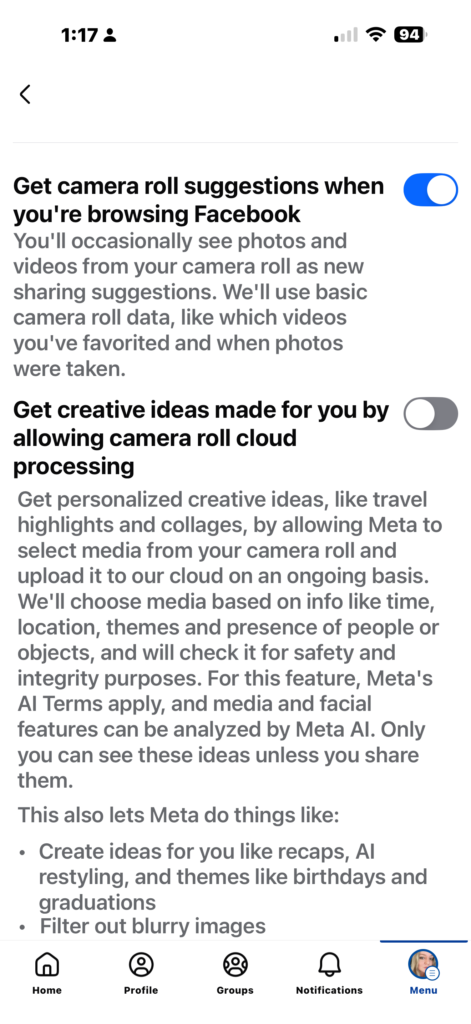Facebook launched a new feature for users, which asks for access to photos on the phone to create AI-edited versions of the images, even if these photos have not yet been published on Facebook. The offer appears when creating a new story, and the app immediately displays a pop-up window asking for permission for “cloud processing” to receive creative suggestions. If agreed, Facebook will regularly upload photos from the user’s camera to its servers, using information about the time, place, and subject of the images.


The service emphasizes that these suggestions are only visible to the user, and the photos are not used for targeted advertising. However, by clicking “Allow,” the user accepts the Meta AI terms, which give the company the right to analyze media and facial features in photos using AI. The date, presence of people or objects are also recorded to create ideas such as collages, summaries, new styles, or thematic selections.
This feature caused a wave of surprise among some users who suddenly received AI-editing suggestions for their old photos. Some noticed that Facebook automatically transformed personal wedding photos into anime style, while others searched the settings for a way to disable “cloud processing.” It turned out that the new option can be found in the “Settings” section, where there are two switches: one is responsible for photo suggestions, the other for allowing “cloud processing” to create AI versions of images.
Meta confirmed that the AI usage terms came into effect on June 23, 2024. They allow analyzing photos, modifying them, and creating new content based on the provided images. Users can disable “cloud processing” in the settings, which will also lead to the deletion of unpublished photos from the cloud 30 days after disabling.
Previously, Meta used only public photos from Facebook and Instagram to train its AI. Now the company has expanded access to images that people have not published if they agreed to the new feature. The company did not provide additional comments on the future use of these images for training its models.



